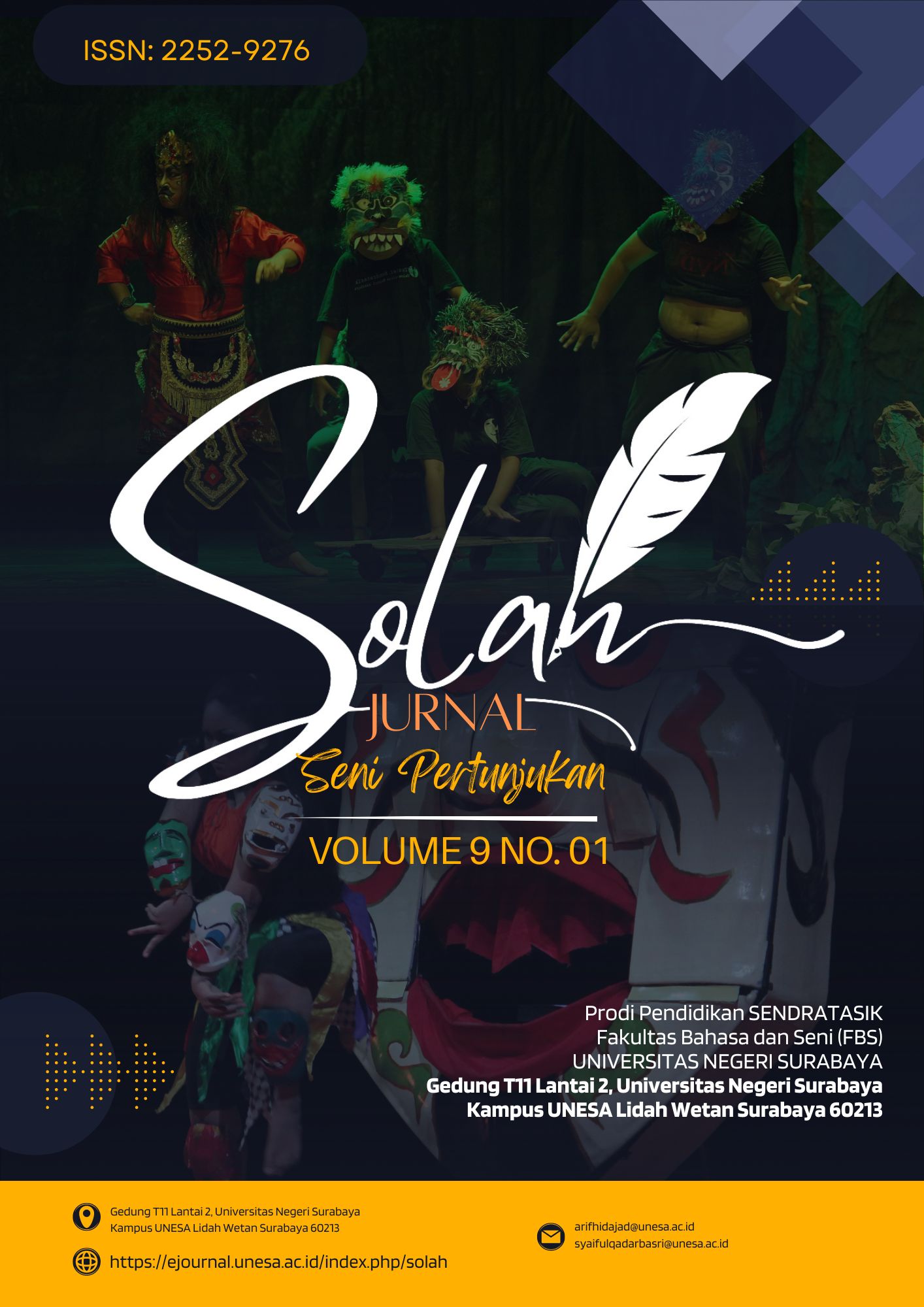Array
UNGKAPAN PERASAAN TAKUT TERTINGGAL TERHADAP TREND TIKTOK
Kata Kunci:
Fomo, Tiktok, Trend, Takut TertinggalAbstrak
Karya tari Fomo On TikTok merupakan sebuah karya yang menggambarkan perasaan seseorang akan ketakutannya jika tertinggal suatu trend masa kini. Karya ini berangkat dari fenomena Fear Of Missing Out yang diartikan dalam bahasa Indonesia yaitu takut tertinggal. Fokus pada karya ini mengenai perasaan takut tertinggal terhadap trend pada aplikasi TikTok yang dapat menimbulkan kecemasan. Fokus bentuk pada karya ini yaitu bentuk tipe tari dramatik. Bentuk tipe tari dramatik yang berkaitan dengan proses penciptaan dengan menggunakan metode konstruksi 1, diantaranya adalah rangsang awal, penentuan tipe tari, penentuan mode penyajian, improvisasi, evaluasi, seleksi dan penghalusan, dan yang terakhir motif. Perasaan takut tertinggal terhadap trend TikTok diungkapkan melalui properti ringlight dan kain klewer yang kemudian dilepas menggambarkan pada saat seseorang bermain TikTok. Perasaan takut tertinggal terhadap trend TikTok juga diungkap secara verbal melalui musik iringan, kalimat-kalimat penari sebagai konten kreator, bahkan gerakan dance TikTok yang diikut sertakan secara verbal dalam karya ini
Unduhan
Unduhan
Diterbitkan
Cara Mengutip
Terbitan
Bagian
 Abstract views: 225
,
Abstract views: 225
, PDF Downloads: 370
PDF Downloads: 370



